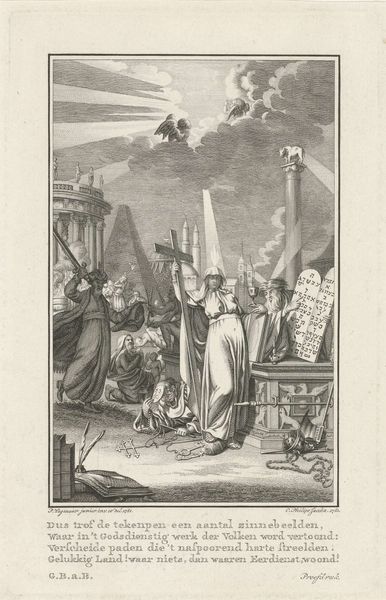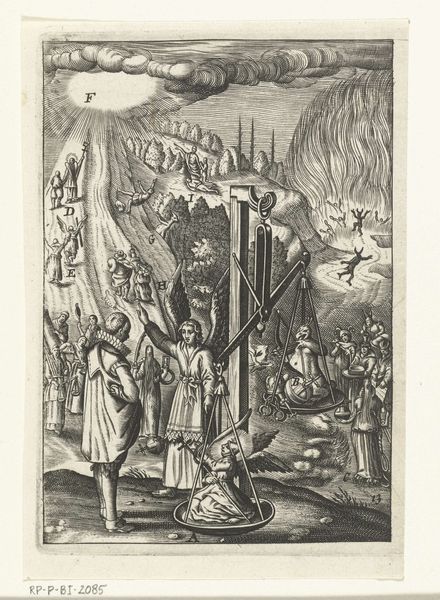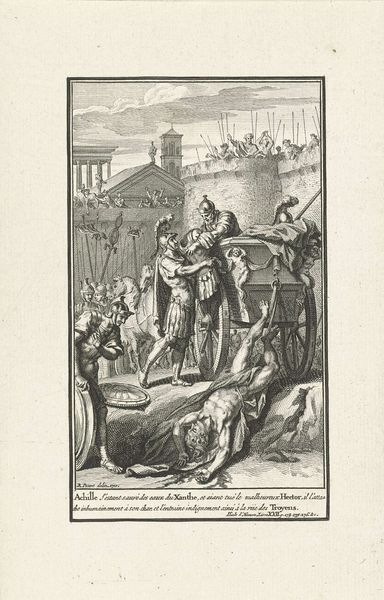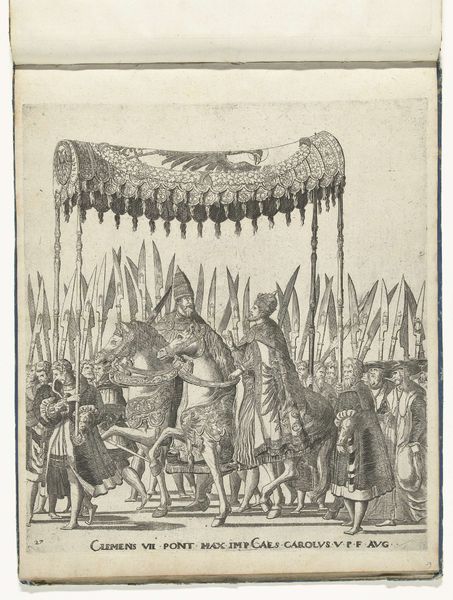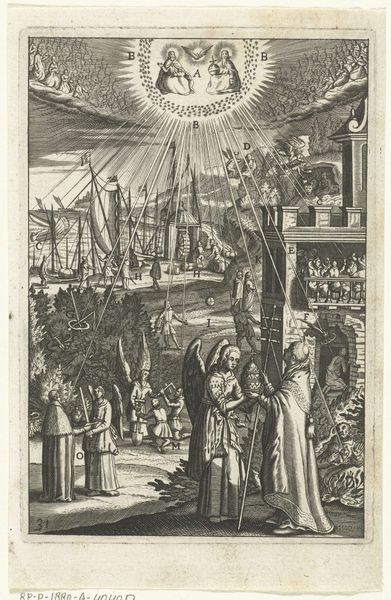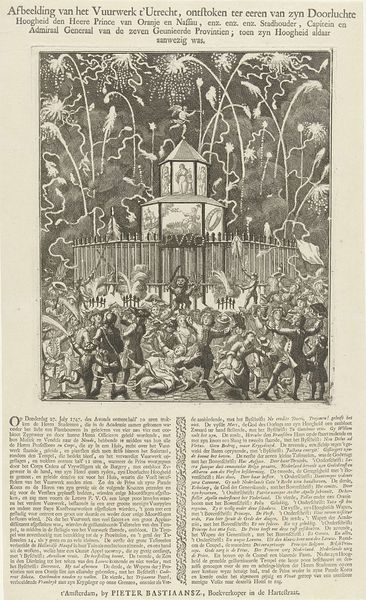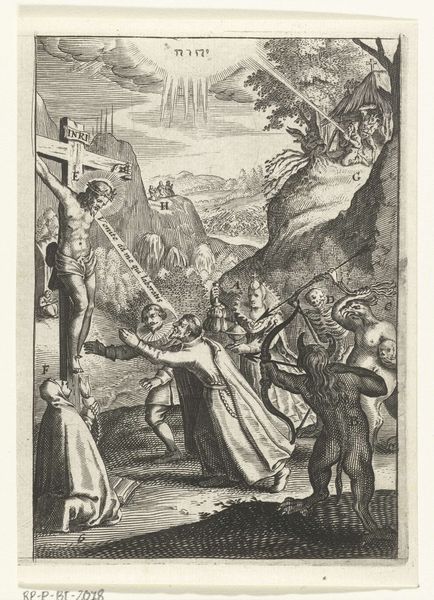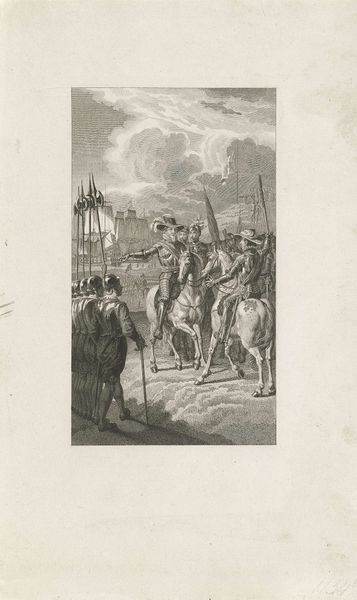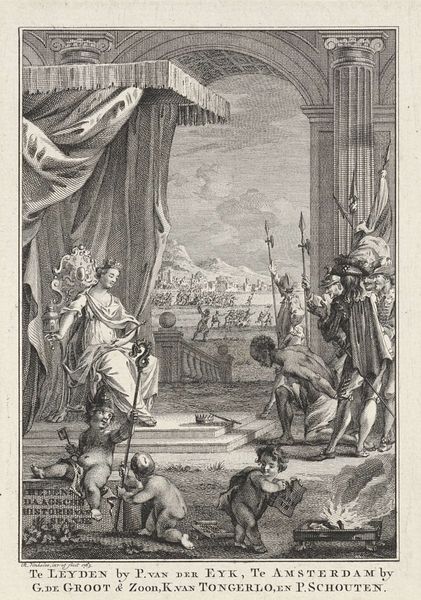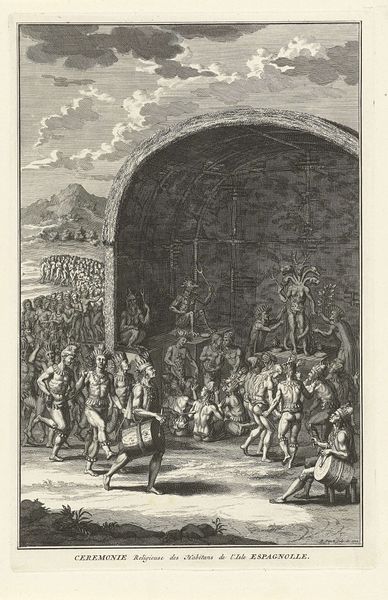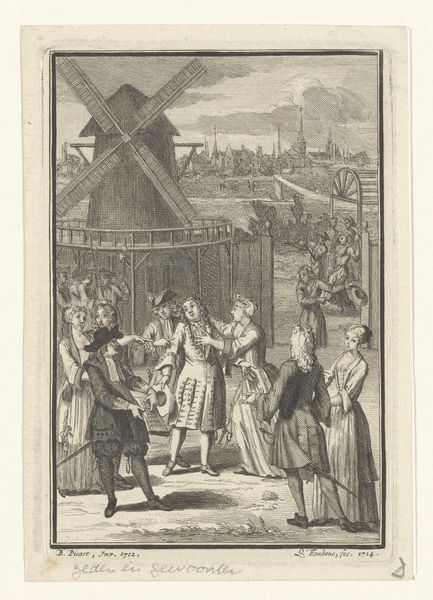
Embleem met mannen die portretten schilderen van heiligen om zo hun voorbeeld te volgen 1620 - 1649
0:00
0:00
anonymous
Rijksmuseum
Dimensions: height 148 mm, width 98 mm
Copyright: Rijks Museum: Open Domain
Curator: This engraving, crafted sometime between 1620 and 1649 by an anonymous artist, is held here at the Rijksmuseum and is titled, "Emblem with men painting portraits of saints in order to follow their example." The title itself gives insight into the overall composition and message. Editor: The allegorical nature immediately strikes me, it’s like a dreamscape filled with ethereal light and earthly struggles all in one contained composition. The line work alone has such expressive detail. Curator: Absolutely. Looking closely, we can analyze the various levels. At the base, a man is being ridden by some sort of demonic figure while the painter looks to emulate holiness through replication, observed by a crowd of monks in prayer to their saintly forebears above who have divine sanction, illuminated from on high. Editor: The semiotics are complex, indeed. The placement of each element relative to the others clearly intends a narrative of artistic practice versus the profane. Notice the artist's focused gaze as he paints, a stark contrast to the contorted figure below burdened by a demonic weight. How this all communicates through line and value is nothing short of a masterclass. Curator: I am fascinated by the presence of established religious hierarchy and institutions standing together to act as divine intermediaries who guide men towards a better world. It shows a sort of optimistic political ideology reflected in art that must’ve been relevant. Editor: Indeed, the engraver cleverly uses depth of field by layering each element with its level of significance while playing on contrasts – light and dark, earthly and divine – the symbolism is powerfully wrought. The composition’s lines seem to act like spotlights shining on key concepts and relationships within this world. Curator: For me, knowing that pieces like these had sociopolitical purpose makes seeing all the careful formal considerations feel a little more meaningful and worthwhile. Editor: Indeed, seeing art historical contexts woven into such fine material composition only elevates its value, and is something that continues to draw audiences today.
Comments
No comments
Be the first to comment and join the conversation on the ultimate creative platform.

